Five moments that defined the first year of PS5
Great exclusives, supply issues, and exciting showcases – a brief look at PS5 since its release on November 12, 2020
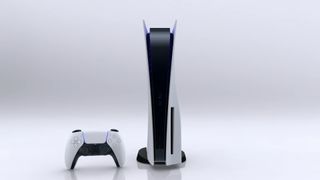
With its singular design and strong emphasis on futuristic input controls and 3D audio technologies, the PS5 hit its opening year with plenty of dynamism and attitude. But beside Xbox Series X, with its advanced cloud-gaming and streaming services, and its abandonment of the whole concept of the console-exclusive, PS5's approach to the games business was definitely more traditional: this is a pure, unadulterated games machine, with a hive of first-party studios working on big exclusive titles.
PS Now was there in the background, but as an augmentation to the main event – the console and the games. But what were the moments that really symbolised this approach, and how did Sony cope with a year of pandemic, component shortages and, well, a lot of demand...
The chaos of launch week
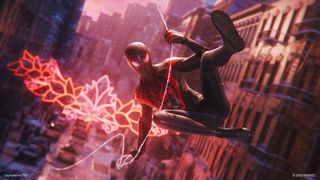
Nothing has quite defined the first year of PS5 as much as the near impossibility of actually buying one. Concerns began pre-launch, when a Bloomberg report alleged that production yield issues would mean that Sony would make 11m rather than 15m units available before March '21. Sony denied this, but then went on to orchestrate a chaotic pre-order campaign, which left retailers having to back-pedal from launch day delivery promises, enraging consumers.
Games consoles are usually in short supply in the first months, but PS5 took this to a new level, creating a fraught community of would-be owners, swapping information on potential suppliers, and slavishly following Twitter feeds offering tips on stock deliveries – and all the while, scalpers made thousands on eBay. By July, Sony was able to reveal sales of 10 million units, making PS5 its fastest selling console, despite continued global issues with distribution and semiconductor supplies. But for many gamers, memories of the PS5 launch will be of frantically refreshing retail store websites rather than playing Spider-Man: Miles Morales on a 4K TV.
Look at the size of that thing

Despite a decent selection of launch-year games, the most memorable PS5 experience for a lot of purchasers will have been taking it out of the box and seeing it in real-life. The giant white machine, with its grand swooping fins, divided critics: Jim Ryan said "We wanted something forward-facing and future-facing, something for the 2020s", but architect Mark Pasnik saw in it the influence of 1950s American car design, while others drew not exactly positive parallels with Tesla's much derided Cyber Truck. The need to utilise an additional and annoyingly awkward stand to store it horizontally caused a lot of complaints – and Microsoft didn't miss the chance to get some revenge for E3 2013, trolling its rival with a viral video of its own.
But then, these stylistic eccentricities are nothing new for Sony. When PS2 arrived, we all thought it looked like a sort of Orwellian office block, and it too needed a separate stand. Yet we got used to that console, and given time, most of us have also learned to appreciate the daring, retro-futuristic design of PS5. It's visually interesting, and it compliments the aesthetics of the PlayStation brand, from the VR headset to the Astro Bot games. It is still, however, a nightmare to dust.
Demon's Souls and the art of the remake
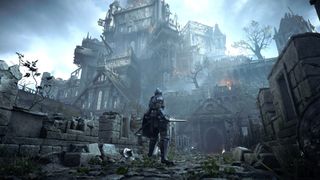
There's no getting away from the fact that PS5 relied heavily on remakes and remasters during its first year. However, what the excellent, feature-packed Final Fantasy 7 Remake Intergrade and Ghost of Tsushima: Director's Cut have shown is that respectfully updating and expanding familiar games can be a valuable artform in itself, rather than just a way to pad out a thin release schedule.
Sign up to the 12DOVE Newsletter
Weekly digests, tales from the communities you love, and more
The flagship example of course, is Demon's Souls, a thorough modernisation of the cult PS3 classic that only a minority of western From Software fans would have played at the time. Intricate gothic architecture, breathtaking enemy designs, and astonishing use of organic light sources were all conjured from the ageing source material by those wily alchemists at Bluepoint Games. Demon's Souls told us that great games can be like great theatrical masterpieces – they are open to reinterpretation and restaging for each generation.
Ratchet and Astro save the world
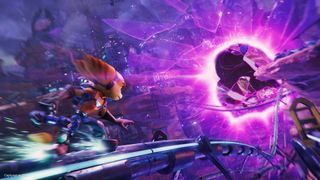
In video game culture, the future is usually depicted as some sort of dystopian hellzone crammed with cyborg assassins and sociopathic alien invasion fleets. It's really lovely then that two of the games that made most use of PS5's array of new features this year were genuinely bright, cheerful, family-friendly sci-fi games. Astro's Playroom is a rich, imaginative platformer that serves as a playful narrative introduction to the innards of the PS5, its puzzles and challenges exploiting the adaptive triggers, gyro sensors and swipe pad perfectly.
Later on, Insomnia's interactive Pixar movie, Ratchet and Clank: Rift Apart, did amazing things with Ray-tracing and replicating the visual and tactile properties of different materials to create a luscious cartoon world. But importantly, these games contrasted well with Demon's Souls and Returnal, providing the sort of tonal balance often lacking in launch year release schedules. In any case, what a lot of us really needed during the dark endless days of the lockdown was to spend quality time with really cute robots – these games delivered.
Showcase to the future
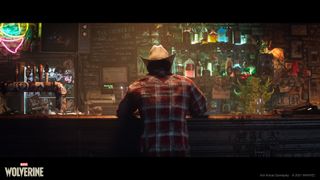
After a quiet few months in terms of fresh announcements (and no presence at E3 again), Sony's September PlayStation Showcase had a lot to do – especially considering the impact of Microsoft's Bethesda deal. In terms of spelling out the near-future of PS5, it didn't disappoint. Over 40 footage-packed minutes, we met Marvel's Spider-Man 2 and Marvel's Wolverine from Insomniac Games, we got longer looks at Gran Turismo 7 and God of War: Ragnarok, and we got another big remake in the shape of Knights of the Old Republic. A tie-in project with Radiohead's Kid A and Amnesiac albums was also there to remind us of Sony's cultural and artistic aspirations. The Showcase was undoubtedly a success and it laid out an ambitious vision for 2022 and beyond.
It feels like Sony wants the PS5 to be the games equivalent of the Marvel Cinematic Universe, emulating its flashy, coherent approach to entertainment, entwining visuals, music, shared narratives and pop culture. In an interview barely a month after the showcase, Sony boss Jim Ryan expressed his frustration that big titles reached just 10-20m people. "We're talking about games stacking up against music, we're talking about games stacking up against movies," he said. "I would love to see a world where hundreds of millions of people can enjoy those games."
While there has been plenty of fantastic PS5 exclusives released in 2021, Sony isn't close to being done yet. Check out our list of upcoming PS5 games to learn about them all.
Keith Stuart is an experienced journalist and editor. While Keith's byline can often be found here at 12DOVE, where he writes about video games and the business that surrounds them, you'll most often find his words on how gaming intersects with technology and digital culture over at The Guardian. He's also the author of best-selling and critically acclaimed books, such as 'A Boy Made of Blocks', 'Days of Wonder', and 'The Frequency of Us'.
Most Popular
